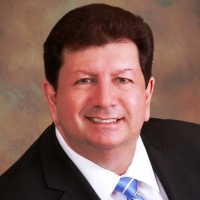What is the level of examination or forensic evaluation which USCIS puts into the I-829 removal of conditions? For example, what issues may arise if the approved construction budget is roughly adhered to, but savings in one area of construction are applied to overages in another area of the construction budget? What steps might USCIS take if aspects of the construction budget runs over our original budget submitted to USCIS?
Answers

Reza Rahbaran
Find an EB-5 Visa Lawyer: Immigration AttorneyUSCIS examines your case to assure that you and your project continue to comply with EB-5 and immigration regulations. It determines if the statements made in the I-526 petition have been accomplished, including job creation forecast and full investment of capital. USCIS is aware of the unpredictable nature of conducting business. However, material changes in the project may be detrimental to the I-829 petition if not handled properly.

Shahzad Q Qadri
RC CreatorsThis all depends on numerous issues. In our experience, if you have met the budget and the job creation requirement, USCIS is little concerned. However, this is a generalized statement, and it is hard to assess the issue without specifics.

Lynne Feldman
Find an EB-5 Visa Lawyer: Immigration AttorneyIf the full amount is invested in the project and you are roughly following the business plan, it should not be a problem. They will scrutinize the job creation very carefully.

Matthew T Galati
Find an EB-5 Visa Lawyer: Immigration AttorneyIt?s hard to answer your question without knowing how the job creation is calculated. The USCIS May 30 memo (http://www.uscis.gov/sites/default/files/USCIS/Laws/Memoranda/2013/May/EB-5%20Adjudications%20PM%20(Approved%20as%20final%205-30-13).pdf) discusses how I-829s are adjudicated. The focus for an I-829 is proving the following: (i) A commercial enterprise was established; (ii) The investor invested or was actively in the process of investing the requisite capital; (iii) The investor sustained the enterprise and capital investment during conditional residency; and (iv) The investor created or can be expected to create within a reasonable period of time ten full-time jobs to qualifying employees. Of course, business plans may change and projected expenditures may not match actual expenditures. Whether that may impact I-829 adjudication is fact-specific. For example, if job creation is based on expenditures, and the actual expenditures are less than anticipated, then there may not be sufficient indirect jobs for all investors in a project. If it is over budget, then there is likely not an issue, assuming no material change from the I-526. It really depends on the economic methodology used. You may need to consult with an immigration attorney to determine the best ways to document (i) to (iv) above.

Salvatore Picataggio
Find an EB-5 Visa Lawyer: Immigration AttorneyUSCIS will require evidence that the investor actually invested the required capital and sustained this investment throughout the entire CPR period. Also, evidence that the new commercial enterprise created or will create, within a reasonable time, the required jobs. Showing that the planned expenditures were actually made can help, as it will show the economic models would be correct in their estimates of indirect job creation.

Ed Beshara
Find an EB-5 Visa Lawyer: Immigration AttorneyThe hiring of an experienced EB-5 attorney and an EB-5 experienced economist will be able to advise you on required expenditures into established categories and expenditure timelines needed for the required job creation.

Daniel B Lundy
Find an EB-5 Visa Lawyer: Immigration AttorneyThe level of examination is fairly high. You will need to thoroughly document the fact that you met the projections in the business plan and economic report. However, in response to the second part of your question, you only need to prove the inputs to your economic model. In the case of construction, the job calculation is based on construction expenditures. Construction expenditures generally fall into several broad categories, i.e. hard costs, soft costs, and FF&E. If the amount spent on different line items in the budget is off by a little from the business plan, but the amount spent on the broad category of costs is at least what you projected it would be, then there should not be an issue. For instance, if you projected $50 million in hard costs, which includes $10 million for concrete work and $8 million for sheetrocking, it will not matter if you end up spending $9 million for concrete work and $9 million for sheetrocking, as long as you spent at least $50 million on hard costs. If you projected $50 million of hard costs and $10 million of soft costs, but ended up with $45 million hard costs and $15 million in soft costs, this could have an impact on the total job numbers because the multipliers (i.e. number of jobs created per million of expenditure) for hard and soft costs may be different in the area of the project (multipliers are location specific). The multipliers for hard and soft costs tend to be somewhat similar, so the actual impact may be small. If you are relying on every last job to reach the 10-jobs-per-investor threshold, you may run into a problem. Budget increases are a different issue. Generally, as long as the project comes in over budget, and not under budget, you are likely to be okay (assuming the overages did not prevent the completion of the project). Because the job projections are based on a model that uses multipliers, i.e. x number of jobs created per $ million spent, spending more results in more jobs. If the budget turns out vastly different, say double, USCIS could theoretically raise an issue relating to material change. However, if the project was completed and the jobs created, you are likely to survive such a challenge. Projections based on revenue, by the way, work the same way. You only really get into trouble when your actual numbers are less than you predicted at the I-526 stage. I think there are two takeaway messages here. One, always be conservative with your budget, revenue and other projections, so that you are likely to meet or exceed them, and two, always have a margin between the number of jobs that are projected and the number you will need to ensure that all investors in a project can have their I-829s approved.

Philip H Teplen
Find an EB-5 Visa Lawyer: Immigration AttorneyThe plan does not have to be honored exactly, as business changes.

Fredrick W Voigtmann
Find an EB-5 Visa Lawyer: Immigration AttorneyThe USCIS review at the I-829 stage is focused on two main issues: was the investment sustained, and were the jobs created within two years or likely to be created within a reasonable period of time thereafter? While it is true that a material change to the business plan might negatively affect either the sustaining of the investment, or more likely, whether jobs were indirectly created, the examples you gave probably would not be considered a material change by USCIS (especially if the delays are less than one year). The reason why you want to stay as close as possible to the original business plan and schedule is because such adherence requires the USCIS to grant deference to its prior adjudication in approving the I-526 petition. If it is a non-regional center case, then the I-829 adjudication is a little more straightforward in terms of proving job creation. For regional center cases with indirect job creation issues, adherence to the original business plan (the inputs used to calculate indirect job creation) and demonstration that the assumptions have been realized are vital.
DISCLAIMER: the information found on this website is intended to be general information; it is not legal or financial advice. Specific legal or financial advice can only be given by a licensed professional with full knowledge of all the facts and circumstances of your particular situation. You should seek consultation with legal, immigration, and financial experts prior to participating in the EB-5 program. Posting a question on this website does not create an attorney-client relationship. All questions you post will be available to the public: do not include confidential information in your question.






